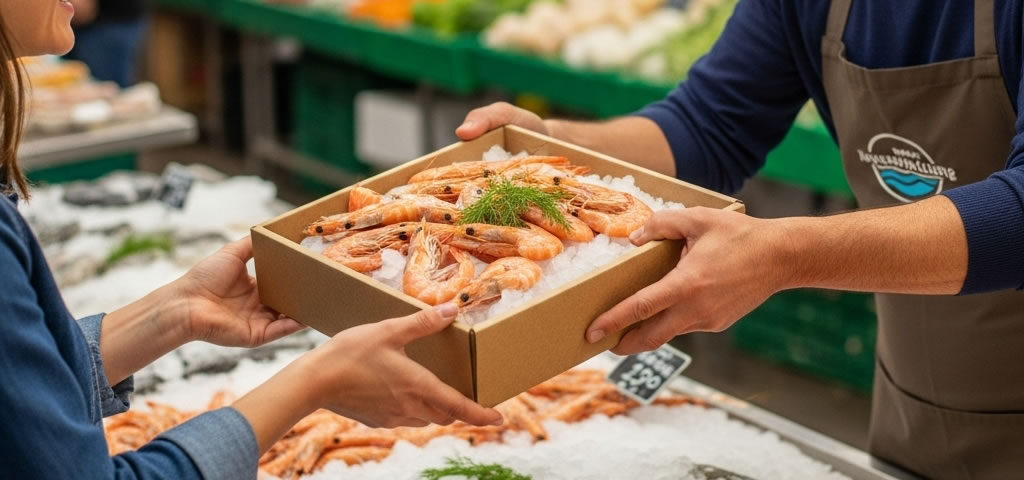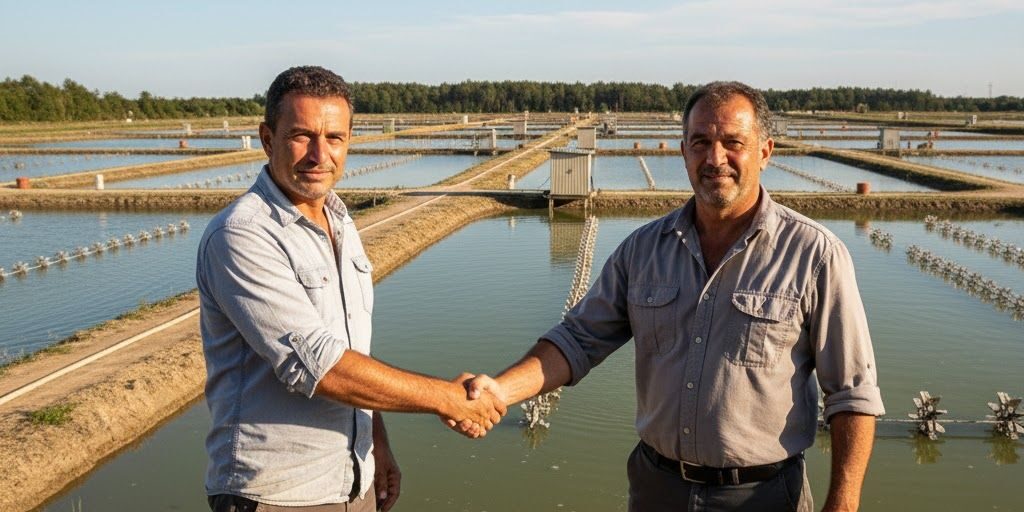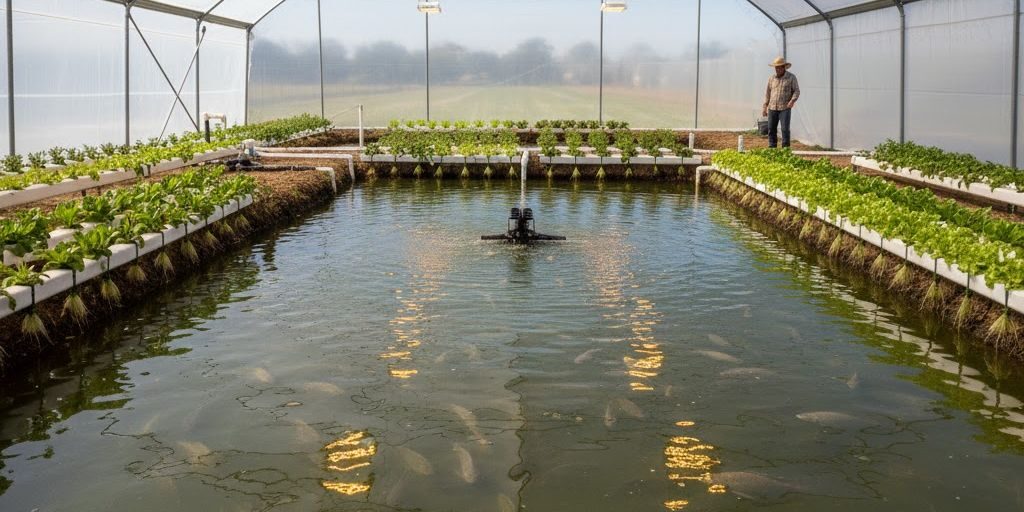- Software Gestor para Aquicultura
- (85) 2139-6730
- contato@despesca.com.br
Distribution channels for shrimp and fish farming

The importance of data management for decision making
11/08/2025
Export and health requirements.
13/08/2025From Pond to Plate: A Detailed Analysis of Buyers in Aquaculture Distribution Channels
Among us producers, we know that the hard work doesn’t end at harvest time. The moment our shrimp or fish leaves the pond to reach the market is a stage as crucial as the management throughout the grow-out period. Choosing the right path for our product is what guarantees that all our effort translates into value and profit. That’s what we’re going to talk about: aquaculture distribution channels, with a special focus on who the buyers are in each of these channels.
The Traditional Path: Volume Buyers
The most common way to sell production is by selling to buyers who deal with large volumes. Here, the main advantage is predictability and simpler logistics, as we deliver the product all at once. Within this channel, the most common buyers are:
- Wholesalers and Distributors: These are the buyers who acquire large batches from your farm and resell them to a network of smaller clients, such as fish markets, supermarkets, and restaurants. They act as the link between the producer and smaller points of sale.
- Processing Industries: These companies buy the raw product and add value by processing it into fillets, peeled shrimp, frozen products, or ready-to-eat meals. They are the gateway to most supermarkets and large retail chains.
- Cooperatives and Producer Associations: A group strategy that allows us, producers, to join forces to gain more negotiating power and access to markets that would be difficult to reach alone.
The Direct Path: Connecting with the End Consumer
A growing trend is direct sales from the producer. This modality allows us to connect with the end consumer, obtaining a higher profit margin and the opportunity to build a strong brand. Here, the buyers are much more diverse:
- Restaurants and Bars: Chefs and restaurant owners value freshness, quality, and a consistent local supply. Creating a direct partnership with them allows us to understand their needs and provide a product that stands out.
- Local Markets and Fishmongers: At these points, we deal directly with the consumer. It’s a chance to tell the story of our production, build a relationship, and earn the loyalty of customers who seek a fresh and trustworthy product.
- End Consumers (via E-commerce and Social Media): Thanks to technology, it is now possible to use social media and e-commerce platforms to sell directly to families and individuals. Logistics for fresh products require extra care with the cold chain, but the reward is a more competitive price and the chance to build a community of loyal customers.
The Export Challenge: The Global Market
For producers looking for new horizons, the seafood export market is a golden opportunity. But, let’s face it, entering it requires a high level of professionalism and technical rigor. You must meet strict sanitary standards, have sustainability certifications, and guarantee a consistent standard of quality and production volume. The reward? More competitive prices and the valuation of our brand on a global scale.
Logistics as a Critical Success Factor
Regardless of the chosen channel, aquaculture logistics is the “secret sauce.” Our product is perishable, so maintaining the cold chain is vital. Proper packaging, the right amount of ice, fast and safe transport… every detail counts to ensure the product arrives in perfect condition. The quality of the product is built in the pond and maintained during transport.
Knowing the Numbers: Data-Driven Decisions
How do you know which channel is the most advantageous? The answer lies in the data. You need to calculate the cost-benefit of each option. For example, what is the cost per kilo of shrimp to sell to a wholesaler versus the cost to package and ship directly to a consumer? Shrimp farm sales management becomes crucial for this analysis. Tools that organize our production, cost, and sales data are indispensable for making this analysis accurately and strategically.
The Power of Brand and Storytelling
In an increasingly competitive market, having a good product is no longer enough. You need to build a brand and tell a story. We can use our origin, our passion for aquaculture, and our commitment to quality and the environment to create an emotional connection with the customer. This is particularly effective in direct sales channels.
Market Analysis: Stay Alert
The market is not static. Aquaculture market analysis must be continuous. Sometimes, the local market pays better; at other times, export demand is stronger. Having the flexibility to diversify distribution channels protects us from fluctuations and allows us to maximize our profit in different scenarios.
At the end of the day, choosing a distribution channel is a strategic decision, not a last-minute task. It is what transforms an excellent production into a truly profitable and sustainable business. Choosing the right path for your product is the best way to value your work and our sector.




